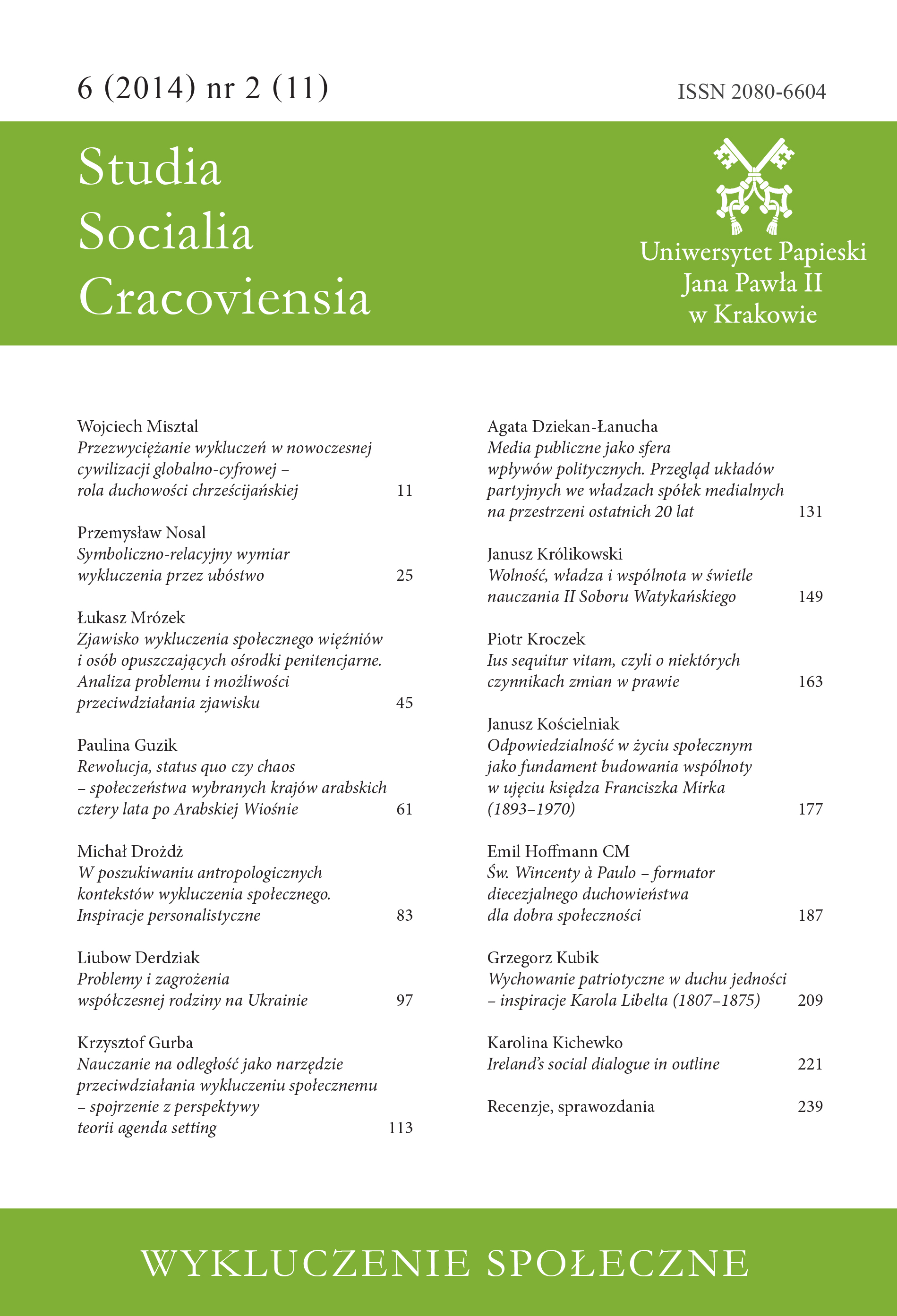
We kindly inform you that, as long as the subject affiliation of our 300.000+ articles is in progress, you might get unsufficient or no results on your third level or second level search. In this case, please broaden your search criteria.

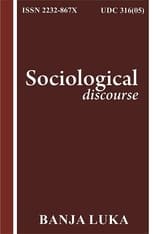
Polazeći od analize odnosa represivnosti i odgovornosti, rad ukazuje na postmoderni totalitarizam entropije racionalnosti kao na uzrok krize socijalnog i uspostavljanja post-socijalne konstelacije. Poseban značaj pridaje se emancipaciji mladih kao kliničkom simptomu krize savremenosti.
More...
The aims of this study were (a) to describe the prevalence of single versus multiple addiction problems in a large representative sample and (b) to identify distinct subgroups of people experiencing substance-related and behavioral addiction problems. Methods: A random sample of 6,000 respondents from Alberta, Canada, completed survey items assessing self-attributed problems experienced in the past year with four substances (alcohol, tobacco, marijuana, and cocaine) and six behaviors (gambling, eating, shopping, sex, video gaming, and work). Hierarchical cluster analyses were used to classify patterns of co-occurring addiction problems on an analytic subsample of 2,728 respondents (1,696 women and 1032 men; Mage = 45.1 years, SDage = 13.5 years) who reported problems with one or more of the addictive behaviors in the previous year. Results: In the total sample, 49.2% of the respondents reported zero, 29.8% reported one, 13.1% reported two, and 7.9% reported three or more addiction problems in the previous year. Cluster-analytic results suggested a 7-group solution. Members of most clusters were characterized by multiple addiction problems; the average number of past year addictive behaviors in cluster members ranged between 1 (Cluster II: excessive eating only) and 2.5 (Cluster VII: excessive video game playing with the frequent co-occurrence of smoking, excessive eating and work). Discussion and conclusions: Our findings replicate previous results indicating that about half of the adult population struggles with at least one excessive behavior in a given year; however, our analyses revealed a higher number of co-occurring addiction clusters than typically found in previous studies.
More...
Проблема вивчення натовпу актуалізувалася в часи суспільних змін, потрясінь, а саме наприкінці ХІХ - на початку ХХ ст. То була епоха масових рухів, революційного настрою. В цей час виникла концепція психології натовпу, яка стала передісторією наукової соціальної психології. Предметом ретельного вивчення багатьох вчених різних країн стали масові явища, великі соціальні групи людей, механізми масового впливу, явища навіювання, наслідування, поведінка особистості в натовпі, взаємодії лідера та натовпу. Найбільш відомими працями з цієї проблематики є праці соціологів Г. Ле Бона, Г. Тарда, Н.К. Михайловського, С. Сігеле, Г. Блумера, Г. В. Плеханова, С. Московіча; психологів З. Фрейда, В. М. Бехтєрєва, В. Н. Войтоловського, Б. Д. Паригіна, С. К. Рощіна, А. М. Зимічева, А. П. Назаретяна, Д. В. Ольшанського.
More...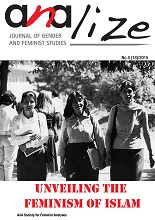
The recent overflow of Disney-related online content like pictures, videos, articles, news or quizzes not only justifies the attempt of bowing it to theoretical reflection and structured analysis, but also proves it is needed in order to unfold the actual dimension of Walt Disney Corporation's influence not only upon the juvenile publics, but also upon the adult audiences. What is more, the accessibility and fluidity of such content on websites, blogs, social networks and online platformscreate unmatched possibilities of cross-disciplinary research of interest for diverse academic fields such as sociology, arts or communication studies. Developing on Atton's (2002), Bailey, Cammaerts and Carpentier's (2008) and Fuchs (2010) definitions and classifications of alternative media and Fuchs's (2010) concept of 'critical media', the present study employs quantitative and qualitative visual and content analysis and the study of public social documents such as online newspaper articles to determine whether the digital artworks of Middle-Eastern artist, Saint Hoax,is a form of (1) alternative media and (2) critical media.
More...
This article attempts to offer several keys to understanding the considerable role of mass media as regards shaping the public opinion on the Church. This analysis is based on the media reactions to the resignation of Benedict XVI. The news appearing in mass media is confronted with the institutional statement of the Pope (declaration). The article presents the factors that make the news and refers the news values to information regarding resignation of Benedict XVI. This indicates why this decision raised common public attention. This article also introduces the role of mass media in shaping the public opinion based on the discussed example of the papal decision of 11 February 2013. The text focuses on how mass media, within their interpretation of the reality, can use manipulation techniques hindering access to truth and making it difficult to understand the news – this issue is also briefly presented in the text.
More...
Politics and politicians continue to affect editing media and journalists. If we’re talking about public television and radio, the current Law on HRT permits more direct interference in personnel policy on HRT than ever in the last decade. After the privatization of the print media influence policy on them is smaller but it is very sophisticated and has not stopped. The main parties have ‘their’ journalists that they do the work. There is a huge role of journalists spins in building political image. Socially responsible journalism must disclose political spin to citizens as autonomous entities freely decide on policy.
More...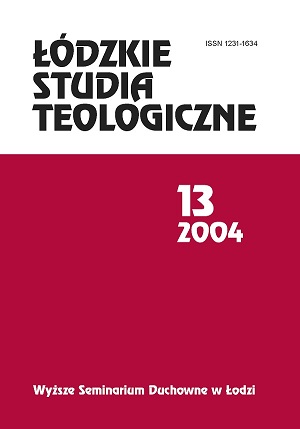
Opinia publiczna, jak określa to w podtytule swojej klasycznej książki Elisabeth Noelle-Neumann, „nasza społeczna skóra”, kształtuje nasze poglądy na otaczającą nas rzeczywistość. Stąd wywodzi się znaczenie i obowiązek poznania mechanizmów jej powstawania i funkcjonowania. Jej funkcją jest odzwierciedlanie rzeczywistych i dominujących w społeczeństwie poglądów i ocen. W zjawisku opinii publicznej uwidacznia się przede wszystkim społeczna a nie indywidualna strona natury człowieka. Owa społeczna natura skłania człowieka do lęku przed odrzuceniem, popycha do starania o szacunek i sympatię otoczenia. Opinia publiczna jawi się jako potężna siła zdolna rozpalać konflikty i obalać rządy, będąca w stanie prześladować i wykluczyć jednostkę, która jej się sprzeciwia. Jej działanie dostrzega się w coraz to nowych przestrzeniach, dlatego warto poznać jej niezwykłą skuteczność, by rozumiejąc jej działanie, mniej obawiać się jej siły.
More...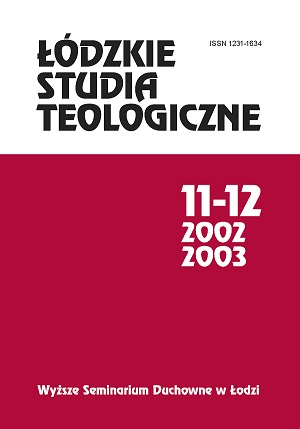
Na temat problemów nadużywania alkoholu i narkotyków powiedziano już wiele. Bez większych trudności można znaleźć dziesiątki książek i artykułów, których autorzy straszą, co prawda słusznie, tragicznymi skutkami sięgania po alkohol i środki narkotyczne, łącznie z pojawieniem się demoralizacji, przestępczości i groźnych chorób kończących się śmiercią. Pisaniu tego materiału przyświeca bardzo ważny cel, jakim jest akcja profilaktyczna – powstrzymywanie młodych osób, w tym przebywających w zakładach poprawczych i schroniskach dla nieletnich, przed używaniem środków uzależniających, niezależnie od tego, czy mieli już wcześniej kontakt z nimi, czy też dotychczas nie próbowali alkoholu ani narkotyków.
More...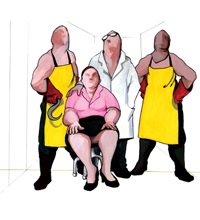
Posljednih se godina pojam „identiteta” našao u središtu prave diskurzivne eksplozije, dok je u isto vrijeme bio podvrgnut temeljitoj kritici. Kako objasniti taj paradoksalni razvoj? I gdje se, s obzirom na njega, mi smještamo u odnosu prema tom pojmu? Dekonstrukcija je provedena u mnoštvu disciplinarnih područja, od kojih su sva, na ovaj ili onaj način, izuzetno kritična prema predodžbi nedjeljivog, izvornog i jedinstvenog identiteta. Kritika samouspostavljenog subjekta u središtu postkartezijanske zapadne metafizike dobila je u svakom pogledu značajnije mjesto u filozofiji. [...]
More...
Modern human is vulnerable to various psychosocial healthaffecting problems. Often one does not realize his or her own behaviours or activities integrated into one’s daily life that in some cases can take pathological forms. Increasingly, and with renewed strength, emerge the activity addictions characterized by a lack of control and compulsion. We become addicted to shopping, tanning, exercise, gambling, work, computer or mobile phone. An addiction, consequently, restricts the freedom of the individual, leading to the deterioration of health and psychosocial well-being. It seems, therefore, necessary, to implement comprehensive measures based on comprehensive approach to the problems in question.
More...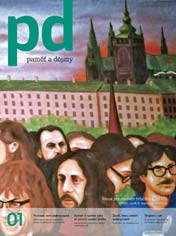
The autobiographical study examines the final year of communist totalitarian power. Theories of chaos and non-equilibrium history are used to demonstrate the political instability of both the governing regime and the dissent and underground. The author illustrates the gradual intertwining of the structures of power, the dissent, the grey zone and nascent civil society via the concept of chiasmus.
More...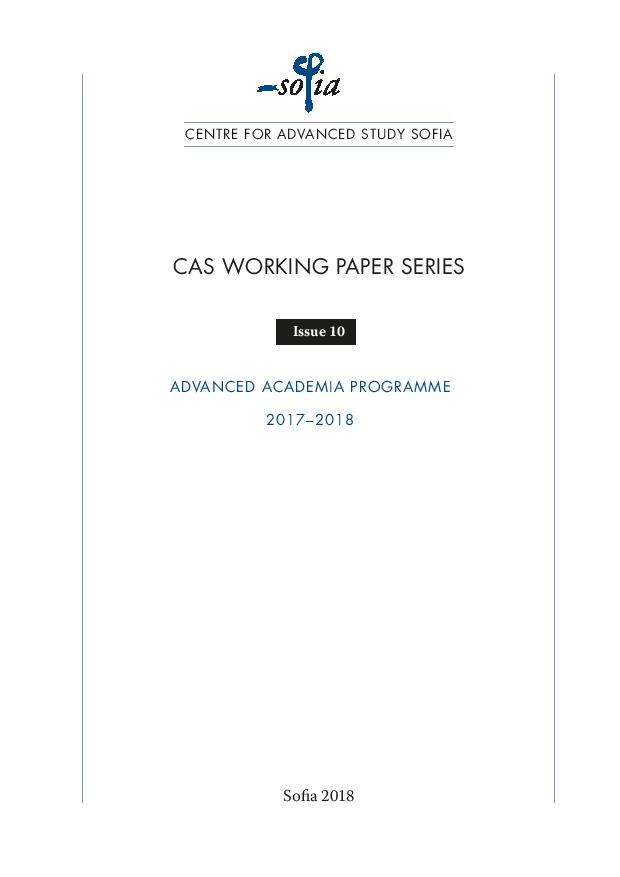
Over the last two decades, the entire liberal democratic world has seen voting behaviours and the rise of political actors which can be grouped in a common phenomenon: cultivation of anti-systemic/anti-establishment attitudes. The rise of these movements has been concomitant with the replacement of the deliberative forms of interpretation of collective identities and social living-together by collective myths and propaganda clichés. Thus the paper first presents the anti-liberal propaganda clichés in Bulgarian print media and news websites with the aim to find out who is scaring whom with what in Bulgaria today. The most important objective of the research, however, is to find out how those messages resonate with the diffuse attitudes, social feelings and stereotypes in Bulgaria, that is, how the propaganda effect arises. Therefore, the second part of the paper presents and analyses interview - and focus group discussion data. They are designed to generate a hypothesis about how the circulating clichés resonate with people’s attitudes, a hypothesis about what makes those clichés effective and about the interactive mechanisms that enact those clichés.Anti-liberal propaganda reworks and packages the aspirations of homegrown populism. Sociologists in Bulgaria have long since pointed out one typical effect of the sense of social injustice: the accusation of parasitism against the Roma minority, a condition that is claimed to be “inborn” and which the political elites use in order to stay in power. The homegrown populist moment here is in the notion that Roma rights are not rights but privileges imposed on “us” by the EU, privileges that deprive the rest of the population – that is, the non-Roma population thus presented as the true “us” – of rights. Here, propaganda resorts to the classical time-tested techniques of creating moral panic about a minority, adds to its image that of the refugees and migrants, and declares hate speech towards all of them to be a civic virtue. The effect of this transformation of civic resentment (the populist moment) into a virtue goes far beyond inciting the public against minorities. It above all promotes the thesis of national sovereignty as the prime European value – one which is being systematically destroyed by the EU, a conduit of American hegemonic interests. Which, exactly, is the populist resentment that is cultivated by this propaganda scheme? That we – Bulgarians – are “second-hand Europeans” and that they – Westerners – “come on all-inclusive package deals to Bulgaria on their welfare payments, while we care for their old people and clean their houses.” Judging from the reactions of the people in the interviews and the focus groups, it’s not that people in Bulgaria are afraid – yes, there is anxiety, especially among some types of people, but it hasn’t taken an objective form, a form of fearful reaction to a threat. In fact, we have a normalization of threat, and the propaganda effect is achieved less through fears than through the feeling of having been wronged, through incitement of resentments.
More...
Along with the transition from the new social movements to the global social movements, there has experienced a significant change in the actors of the movements, in their interlocutor, in their organization, in their demand. An important pillar in the plane of the actors in this change was the emergence of Generation Me visibility at the movements. Generation Me have have used extensively social media in the of organization and action, separates himself from other actors in terms of bodily visibility and his clothes. Generation Me reveals the specific actions with of certain level of knowledge, art, education and culture, questions the current life and management models with another world's demand. Generation Me have presented presenting a new perspective to the movement, collected the attention of the public with the specific actions, reached wide circles of the slogans created with ironic language and motivate energy with motions. In this plane, Generation Me emerges as an important actor in the global social movements. In this study have used Generation Me conceptualizationof by Tweng due to the satisfying to work on the issue in Turkey. The relationship between the new generation and global social movements was done in the axis of this conceptualization. The study was conducted in the form of literature review and on a theoretical level.
More...
With the transition from the classical social movements to the new social movements, the worker identity has been shattered and the different actors have brought new demands to the social movements. The new demands had contained that, the elimination of discrimination such as race, gender, race and ethnicity, gain visibility in social identities, the right of city, the transformation in values and norms, reconstruction of cultural sphere, autonomy and freedom, a democratic future, effective participation and ask for accountability from the authority. Among these demands, firstly, identity demand emerged in new social movements and movements have made themselves visible in social life with the demand for identity. Within the framework of identity demand have been emphasized that, the recognition of differences in social, political and cultural fields, be able to expression themselves of differences in through cultural practices and lifestyle emerging on the basis of pluralistic identities. With this demand new social movements have decomposed from the classical social movements at the point that, different actors participate in the social movements, the participants in the movement are defined on the actor's plane and transforming the demands of the movements. In this study, the rise of the new social movements the axis in demand for identity was put forward in a theoretical plane and literature survey.
More...
This article attempts to answer the question: which emotional and cognitive factors affect analytical and perceptual abilities of the individual in the context of socio-technical impact of the media? The author refers to a wide range of models, theories and perspectives connected with mechanisms of human thinking, emotions and choices. The author presents an analysis of two modes of brain activity, automatic modes of thinking, judgment heuristics, cognitive biases and the impact of emotion on human perception.
More...
The social aspect of revitalization is a process of organized and complex actions aimed at counteracting the development of negative social phenomena (pathologies, unemployment, social exclusion, homelessness), by stimulating the potential and resources of local communities. In Poland, the interest in this aspect of revitalization is growing, which is reflected in the number and diversity of revitalization projects implemented. The aim of the article is to outline the concepts and objectives of revitalization at the social level, but above all to show various examples of good practices in this area. The article is based on literature on the issues of revitalization and source documents describing revitalization projects of a social nature.
More...
The aim of the article is to indicate processes related to marginalization, social exclusion and exclusion, which indirectly may influence the emergence of new threats or make existing ones more dynamic. Although these terms describe the same area, nevertheless, from different perspectives, they indicate a complicated mechanism of social phenomena that result in a sense of threat to individuals and groups. Minimizing the sense of threat as well as the threats themselves requires an in-depth knowledge of the mechanisms of their formation, a good diagnosis of marginalized groups in a specific community as well as the introduction or improvement of the support and subsidiarity system.
More...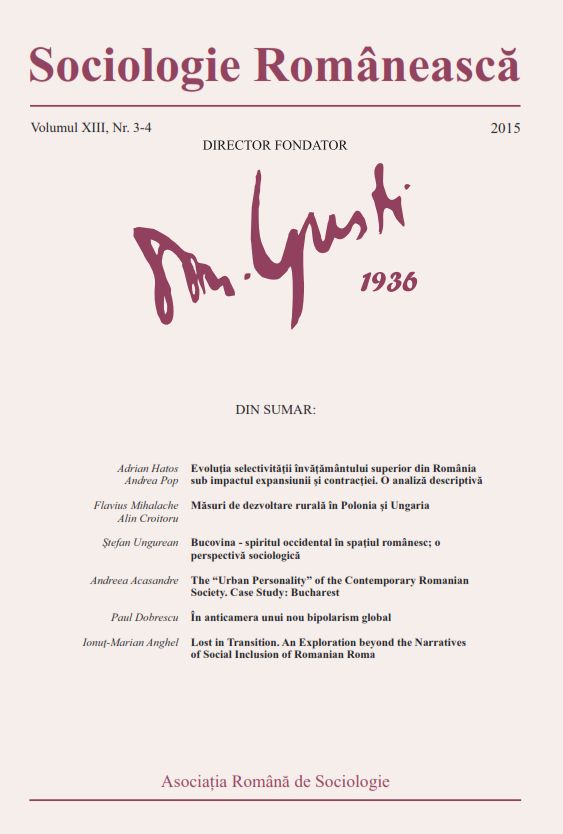
The Youth Guarantee and its financial tool the Youth Employment Initiative as EU level initiative, aim to answer the rising concerns caused by the growing problems of youth unemployment by fostering youth activation and labour market integration. Both are associated to specific recommendations for member states to enhance intra-agency coordination and to expand the scope of labour market policies, while both present a good case for research regarding policies’ coordination and government, and in-policy content. The paper analyses the process of introducing and implementing YG and YIE in Bulgaria and outlines changes in the activation policy and strategies for youth labour market integration with focus on both substantial and procedural reforms. For the empirical purpose of the study, desk-research on relevant policy documents, existing national evaluations, country-based literature and statistics, media publications and expert interviews conducted with policy actors from agencies involved in the implementation of labour market programs. The article contributes to the state of art by presenting and analysing details and insights on policy changes as well as existing short-term data on policy outcomes and tries to go further by suggesting policy recommendations to improve existing measures.
More...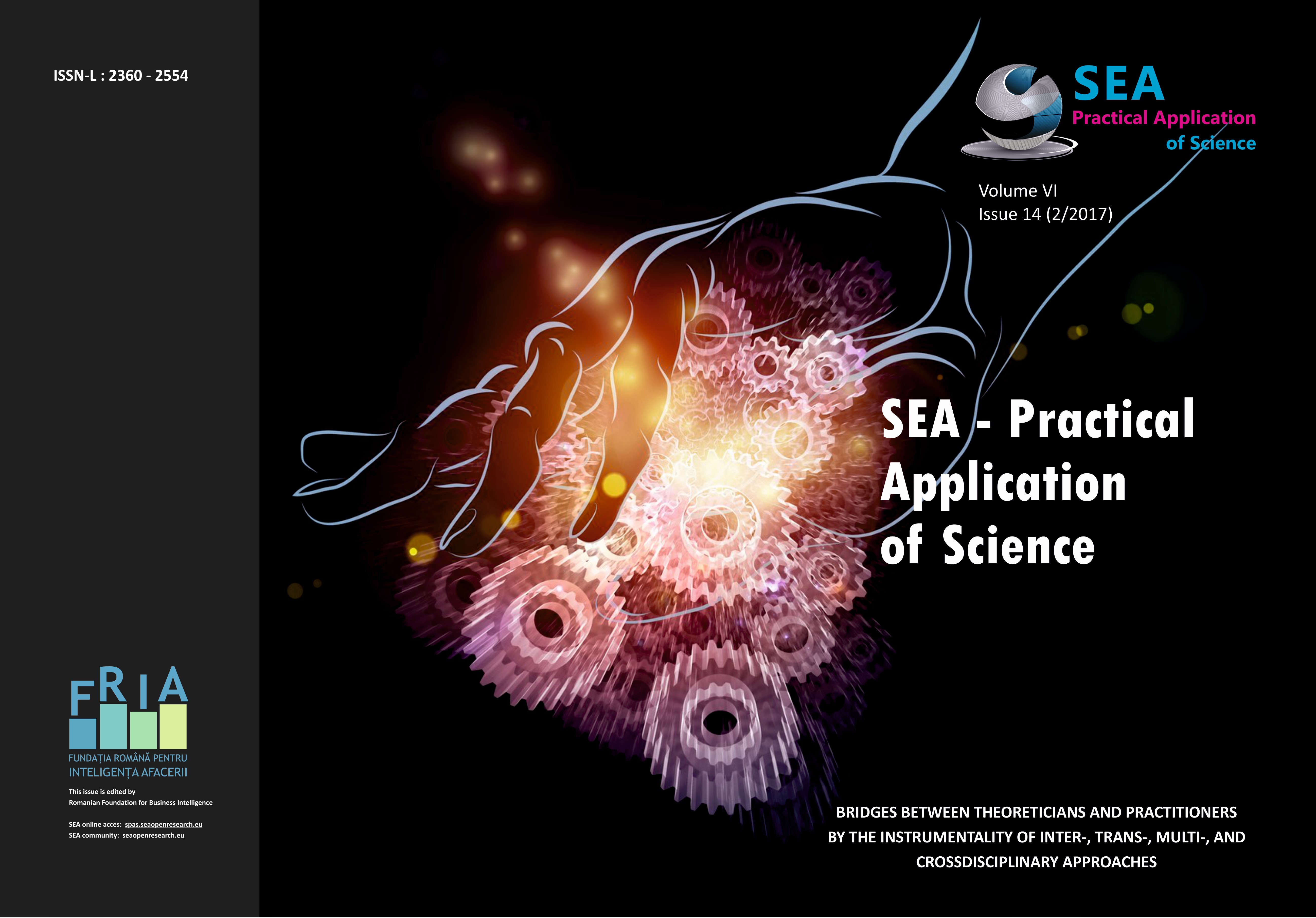
The purpose of this paper is to analyze the most recent running marathons in Bucharest to see whether they are part of a political agenda or not, and if yes, what are the reasons for this. Is this a way of allowing people to bond together, and to take part in charity? Is this part of the way media imposes its agenda on people, or vice-versa? Is it a way of political elites to control the masses and make them take part in welfare activities? The paper will take into account the hypothesis of sports and welfare holding communities together.
More...